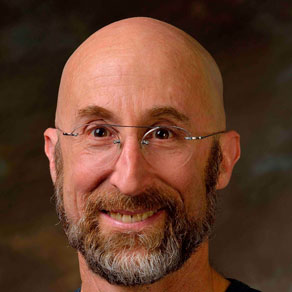
Bram van Ginneken
[introductory/intermediate] Deep Learning for Medical Image Analysis
Summary
Imaging is a cornerstone of medicine. Hundreds of thousands of medical specialists have been trained for many years to interpret images for diagnosis, to make treatment decisions, to segment tumors and organs at risk for radiotherapy treatment planning, to measure the response to treatment, to guide interventions, and so on. Can we use deep learning instead of human experts? Is the performance of state-of-the-art deep learning systems sufficient to replace human readers? Or should deep learning only be an assistant to human experts? How do you validate deep learning solutions for medical tasks? What products are already available, and where are the bottlenecks? Are there tasks where deep learning can extract information from medical images that humans cannot extract, and can this be used to make better diagnoses and prediction of treatment response? Is explainable AI a requirement for medical AI solutions to be acceptable in clinical routine? Can we produce deep learning systems at scale, using the large transformer models that have recently produced such impressive results in natural language processing? These questions are addressed and discussed in this course.
Syllabus
The first part of the course will introduce medical imaging, how it is used in healthcare, and provide a short overview of classical approaches to medical image analysis. The second part will focus on convolutional neural networks and present the most popular architectures for image classification, detection and segmentation and how these have been adapted and combined in existing certified solutions that are available today. The final part will present recent approaches and discuss open problems such as out-of-distribution detection, reducing the time needed to develop high-performing deep learning systems, and the technical and sociolegal challenges of developing continuously learning AI systems for healthcare.
References
G. Litjens, T. Kooi, B. Ehteshami Bejnordi, A. Setio, F. Ciompi, M. Ghafoorian, J. van der Laak, B. van Ginneken and C. Sánchez, “A Survey on Deep Learning in Medical Image Analysis”, Medical Image Analysis, 2017;42:60-88. https://doi.org/10.1016/j.media.2017.07.005. Preprint available at https://arxiv.org/abs/1702.05747
B. Ehteshami Bejnordi, M. Veta, P. van Diest, B. van Ginneken, N. Karssemeijer, G. Litjens, J. van der Laak, and the CAMELYON16 Consortium, “Diagnostic Assessment of Deep Learning Algorithms for Detection of Lymph Node Metastases in Women With Breast Cancer”, Journal of the American Medical Association, 2017;318(22):2199-2210. https://doi.org/10.1001/jama.2017.14585. Available at https://www.ncbi.nlm.nih.gov/pmc/articles/PMC5820737/
W. Bulten, H. Pinckaers, H. van Boven, R. Vink, T. de Bel, B. van Ginneken, J. van der Laak, C. de Hulsbergen-van Kaa and G. Litjens, “Automated deep-learning system for Gleason grading of prostate cancer using biopsies: a diagnostic study”, Lancet Oncology, 2020;21(2):233-241. https://doi.org/10.1016/S1470-2045(19)30739-9
K. Venkadesh, A. Setio, A. Schreuder, E. Scholten, K. Chung, M. W Wille, Z. Saghir, B. van Ginneken, M. Prokop and C. Jacobs, “Deep Learning for Malignancy Risk Estimation of Pulmonary Nodules Detected at Low-Dose Screening CT.”, Radiology, 2021;300(2):438-447. https://doi.org/10.1148/radiol.2021204433. Available at https://repository.ubn.ru.nl/handle/2066/236812
F. Isensee, P.F. Jaeger, S.A.A. Kohl, J. Petersen and K.H. Maier-Hein, “nnU-Net: a self-configuring method for deep learning-based biomedical image segmentation”, Nature Methods, 2020(18):203-211. Preprint available at http://arxiv.org/pdf/1904.08128
Y. LeCun, Y. Bengio and G. Hinton, “Deep Learning”, Nature, 2015(512):436-444. Available at https://s3.us-east-2.amazonaws.com/hkg-website-assets/static/pages/files/DeepLearning.pdf
T.B. Brown, B. Mann, N. Ryder et al., “Language Models are Few-Shot Learners”, https://arxiv.org/abs/2005.14165
A. Dosovitskiy, L. Beyer, A. Kolesnikov, et al. “An Image is Worth 16×16 Words: Transformers for Image Recognition at Scale”, https://arxiv.org/abs/2010.11929
R. Bommasani, D.A. Hudson, E. Adeli et al., “On the Opportunities and Risks of Foundation Models”, https://arxiv.org/abs/2108.07258
K. van Leeuwen, S. Schalekamp, M. Rutten, B. van Ginneken and M. de Rooij, “Artificial intelligence in radiology: 100 commercially available products and their scientific evidence”, European Radiology, 2021;31:3797-3804. https://doi.org/10.1007/s00330-021-07892-z
Pre-requisites
It is helpful to understand the basics of deep learning.
Short bio
Bram van Ginneken is Professor of Medical Image Analysis at Radboud University Medical Center and chairs the Diagnostic Image Analysis Group. He also works for Fraunhofer MEVIS in Bremen, Germany, and is a founder of Thirona, a company that develops software and provides services for medical image analysis. He studied Physics at Eindhoven University of Technology and Utrecht University. In 2001, he obtained his PhD at the Image Sciences Institute on Computer-Aided Diagnosis in Chest Radiography. This resulted in the product CAD4TB for tuberculosis screening, now operational in over 45 countries. He has (co-)authored over 250 publications in international journals. He is member of the Editorial Board of Medical Image Analysis. He pioneered the concept of challenges in medical image analysis.























